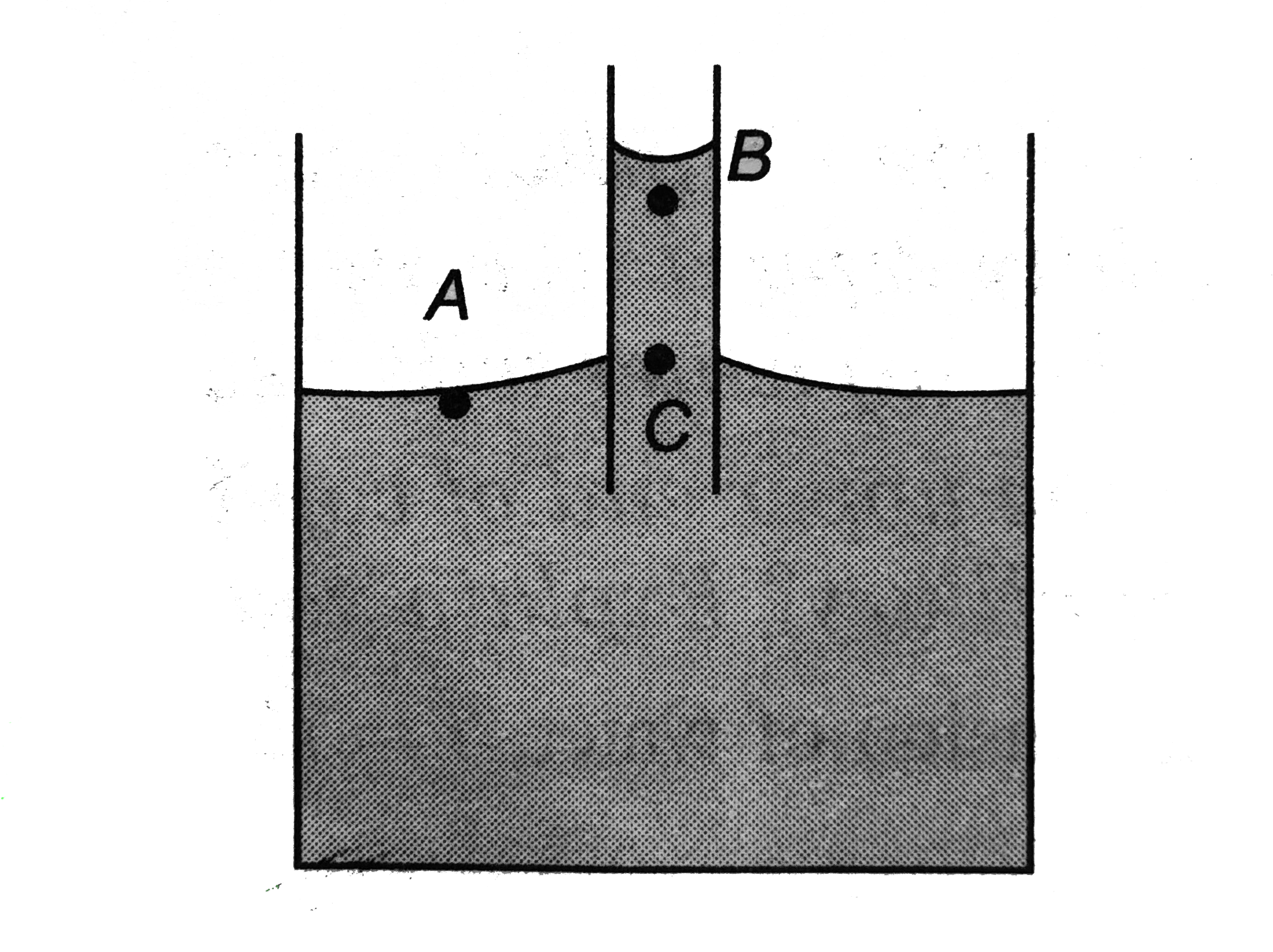 , P will be :
, P will be :



mixture of (a) and (b)
The correct Answer is:B
Similar Questions
Two events A and B will be independent, if(A) A and B are mutually exclusive(B) P(A'∩B')=[1−P(A)][1−P(B)](C) P(A)=P(B) (D) P(A)+P(B)=1
View SolutionAssertion : Two identical bulbs when connected across a battery, produce a total power P. When they are connected across the same battery in series total power consumed will be P4.
Reason : In parallel, P=P1+P2 and in series P=P1P2P1+P2
View SolutionIf the sum of P terms of an A.P. is q and the sum of q terms is p , then the sum of p+q terms will be
(a) 0
(b) p−q
(c) p+q
(d) (p+q)
View Solutionp∘ and p are vapour pressure of pure liquid and solution respectively. Among (a) p∘, (b) p/p∘ and (c) (p∘−p)/p∘, which are temperature independent. Why ?
View SolutionA capillary tube is dipped in a liquid. Let pressure at point A,B and C be pApB and pC respectively, then

1) p A = p B = p C
2)p A = p B < p C
3)p A = p C < p B
4)p A = p C > p B
View SolutionIf A=ϕ, then find each of the following :
(i) P(A)
(ii) P(P(A))
(iii) P{P(P(A))}.
View SolutionIf P is a two-rowed matrix satisfying P'=P−1, then P can be
View SolutionIf P(A∣B)>P(A), then which of the following is correct:(A) P(B∣A)<;P(B) (B) P(A∩B)<P(A)⋅P(B) (c)P(B∣A)>P(B) (D) P(B∣A)=P(B)
View SolutionP - P - P bond angle in white phosphorous is
View SolutionIf P = {2, 3}, then P×P is equal to
View Solution
